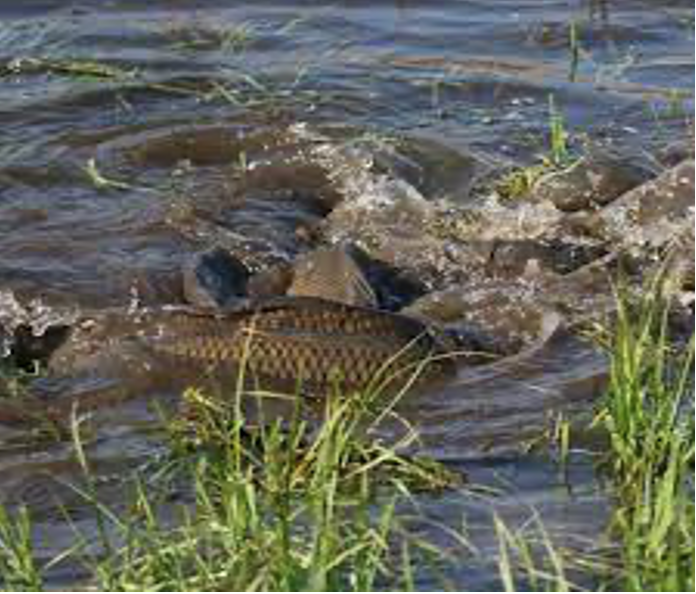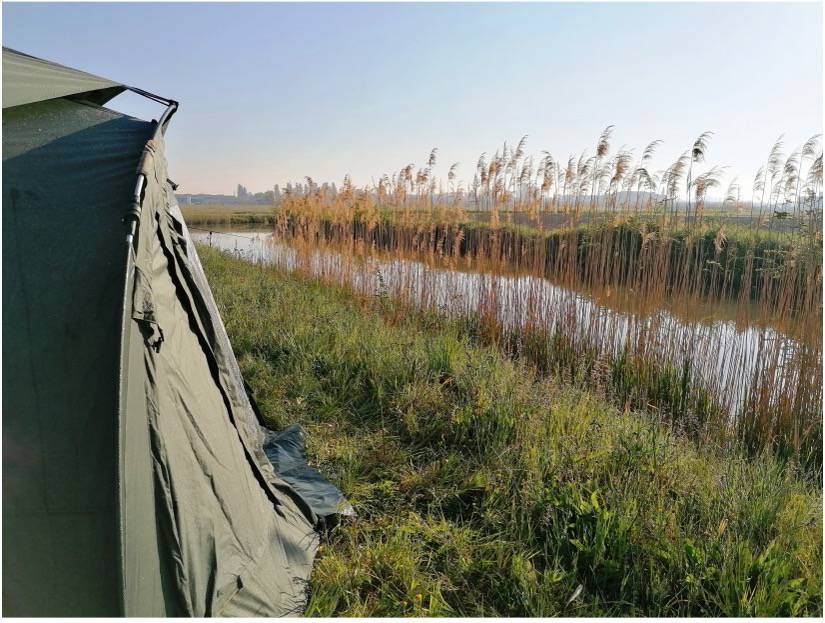
We are now in May and the bodies of water are becoming more colorful, green takes over and carp fishing is certainly more dynamic now.
As with all animals in spring, carp also experience their reproductive period here, but how does it work?
First of all, let's start by saying that carp reach sexual maturity between 2 and 4 years of age although males are usually earlier than females.
Reproduction on average starts in mid-May and ends in mid-June although it can vary greatly depending on habitat and weather conditions.
The carp's reproductive period is usually in the middle of May and ends in mid-June although it can vary greatly depending on habitat and weather conditions.
The carp's reproductive period is usually in the middle of June

Normally, a female lays an average of 100,000 to 200,000 eggs that measure 1.5 mm in diameter. They are coated with a sticky substance that will be used to adhere them to the surfaces where they will be laid.
The females, to lay eggs, swim between aquatic plants and reeds where present. Immediately after their passage, the male arrives and releases the seminal fluid, fertilizing the eggs, which will hatch within a week.
Having said that, and knowing that nature is not commanded, during this period there are those who prefer to stop for a month or so and leave the cyprinids quiet and those who instead set their fishing activity by concentrating where the carp have already finished spawning.
It is possible that in May in some somewhat cold stretches of water the carp are not yet spawning, but we are talking about places such as large lakes at a medium altitude.

For those who, like yours truly, live in the plains, it will certainly be easier to concentrate on shallow waterways where the mild temperatures of spring have undoubtedly allowed the water to warm up gradually and thus allowed our finfish friends to reproduce.
Alternatively, we fish in small lakes or, even better, in small canals or reclamations. It is here that in late May we could, if the regional regulations allow, practice our passion successfully.

In order to set up such a session correctly, it will help to start frequenting the chosen waterway again in April. This is because probably, with the first sunny days, the carp will start their spawning activity and it will be easy to intercept them in places rich in vegetation such as reeds, branches or aquatic plants in general.
Carp in the immediate post-fishing period do not abandon these places immediately, that's why it could be a good choice to set our session in these spots.
If we should arrive late at the spot will certainly be other places to check. Indeed, finding a crossing of channels, inlets like small locks, plants and branches in the water would not be so easy anymore. A rod with a lead will serve us to probe the bottom, which will easily be no more than five feet. Fundamental will be finding stretches of hard, firm bottom because this is where we will need to cast our decoys. A preventive baiting campaign of a couple of weeks based on grits and boiles and by May the spot will be ready.

A factor to keep in mind is that it is essential to keep a close eye on the reproductive activity of carp, which depends on the season and current weather conditions. Quick cold disturbances in the middle of the spawn could interrupt the spawning phase without, however, ending it and destabilizing the carp.It is different when thunderstorms occur 15 or 20 days from the start of the spawn. This alteration of temperatures would end spawning, bringing an increase in the oxygen level in the water and appetite to the carp. Under these conditions, baiting should undergo changes in quantity.
Conducting fishing will be very simple but must follow some simple rules. First and foremost, silence is golden! The body of water is small and the depth shallow, remember that the fish hear us well.
It is no coincidence that in these places most catches take place at night with single stakes, spots spaced about ten meters apart at least, camp in the middle and if possible a little away from the waterway.

It will not even be necessary to make long casts because these channels often do not reach 20 meters in width. Remember beacons with volume at a minimum and control unit always at hand. If we have done things right we will spend the night off and see the last bite early in the morning. Often these places hide treasures and we might even run into some big guys.
Daniele Annovi
Team Molino Zombini





